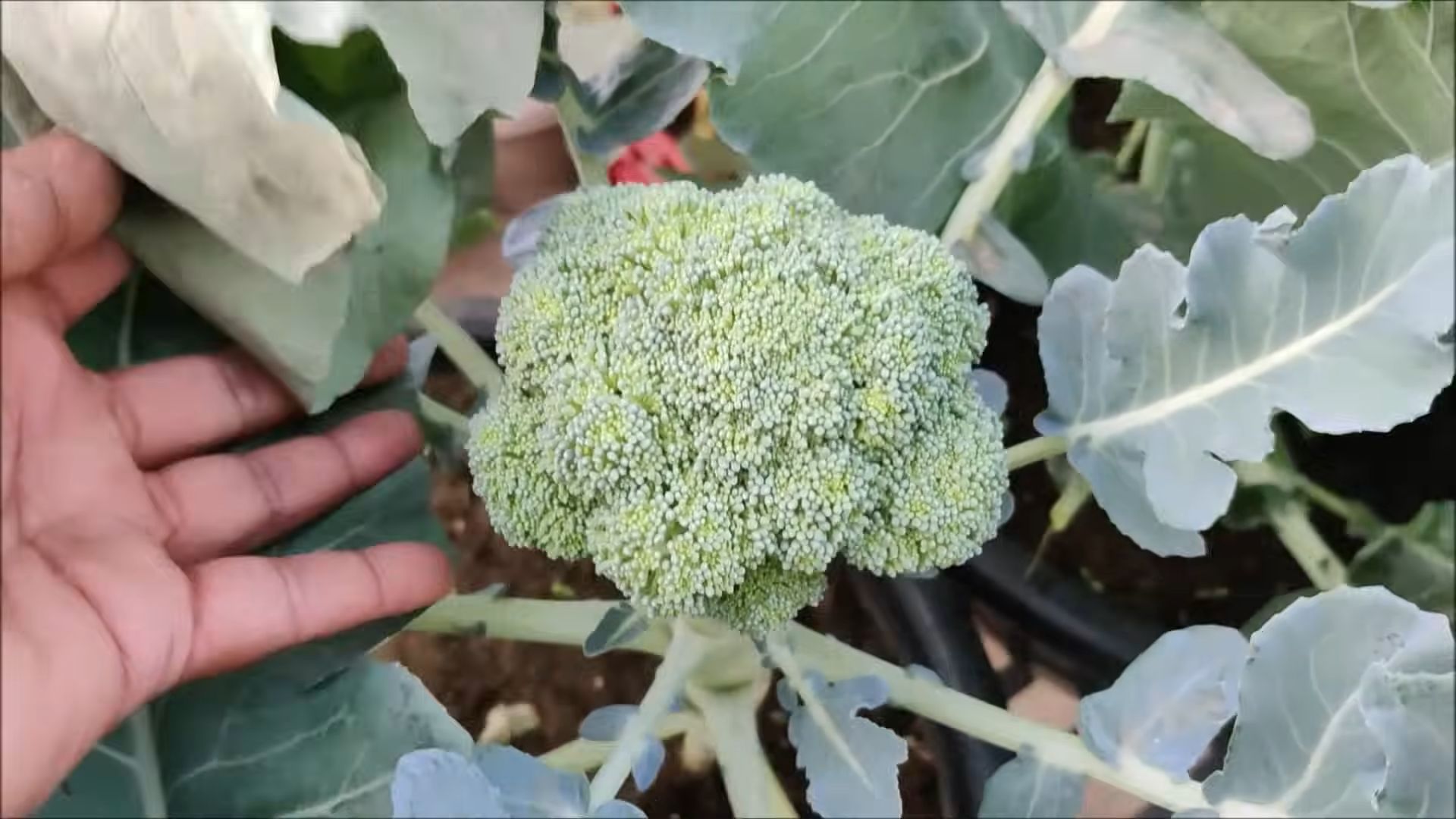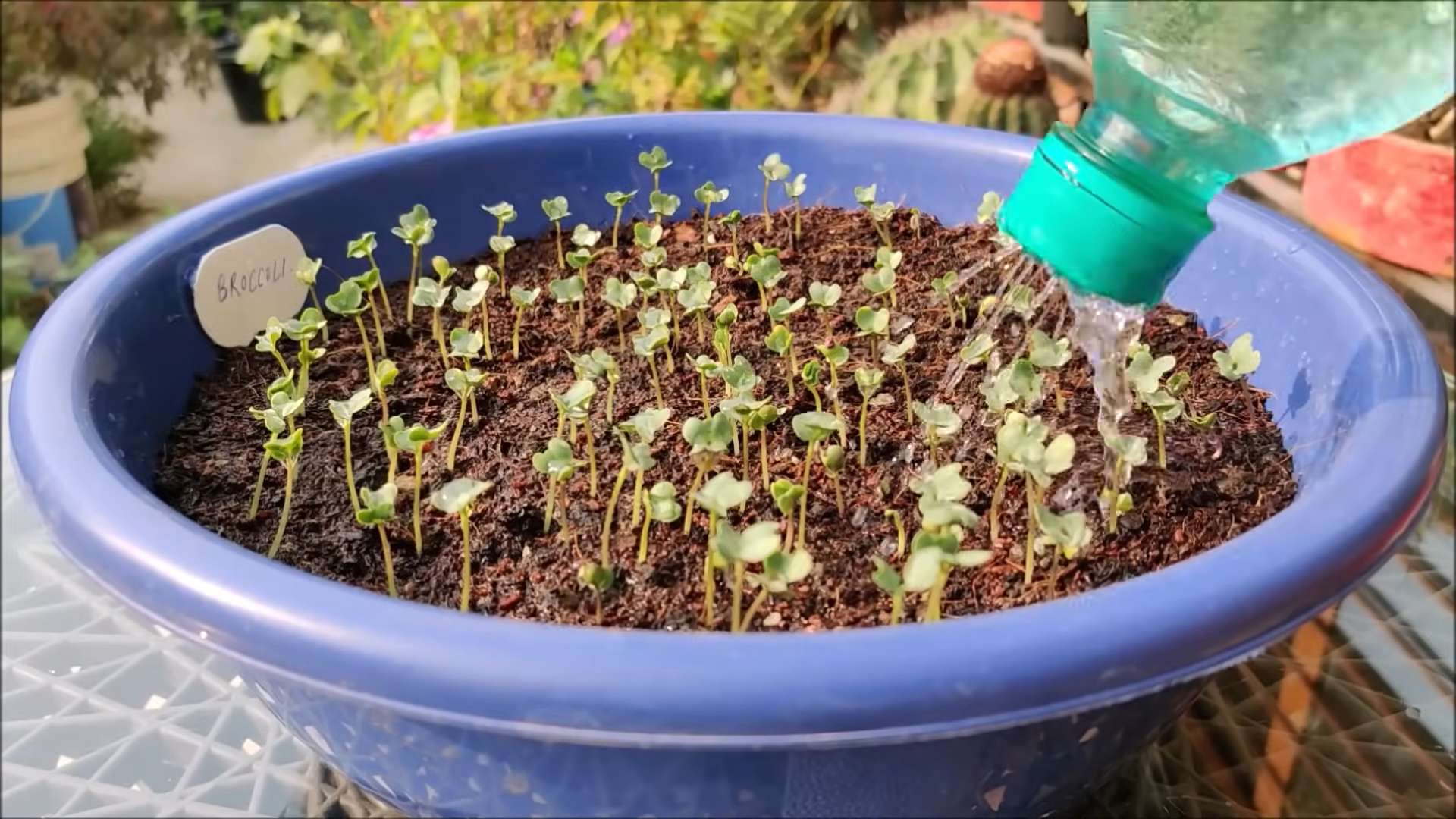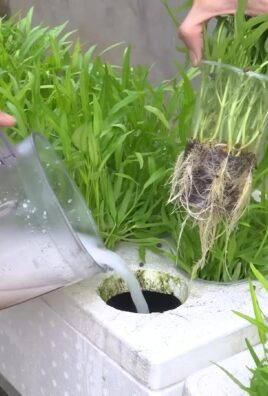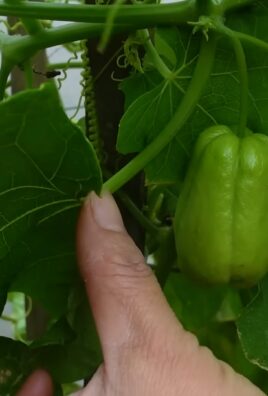Grow Broccoli at Home? Absolutely! Imagine stepping into your backyard and harvesting fresh, vibrant broccoli, bursting with flavor and nutrients. It’s not just a dream; it’s an achievable reality with a little know-how and some simple DIY techniques. For centuries, cultivating your own food has been a cornerstone of self-sufficiency and a connection to nature. From ancient Roman gardens to the victory gardens of World War II, growing your own produce has always held a special significance.
But in today’s fast-paced world, why should you bother to grow broccoli at home? Well, for starters, you’ll have access to broccoli that’s fresher and more flavorful than anything you can buy at the store. Plus, you’ll know exactly what’s gone into growing it – no harmful pesticides or questionable practices. I know, I know, it sounds intimidating, but trust me, it’s easier than you think! This article is packed with easy-to-follow DIY tricks and hacks that will empower you to cultivate a thriving broccoli patch, even if you’re a complete beginner. Get ready to ditch the grocery store broccoli and embrace the joy of homegrown goodness!

Growing Broccoli at Home: A Beginner’s Guide
Okay, so you want to grow broccoli at home? Awesome! It’s totally doable, and honestly, there’s nothing quite like harvesting your own fresh, crunchy broccoli. I’ve been growing my own for a few years now, and I’m going to walk you through everything you need to know, from seed to harvest. Let’s get started!
Choosing Your Broccoli Variety
First things first, let’s talk broccoli varieties. There are tons out there, and choosing the right one can make a big difference in your success. Here are a few of my favorites:
* Waltham 29: This is a classic, reliable variety that’s known for its good flavor and cold hardiness. It’s a great choice for beginners.
* DiCicco: DiCicco is an heirloom variety that produces a large main head followed by lots of smaller side shoots. This means you get a longer harvest period!
* Green Magic: If you’re looking for early maturity, Green Magic is a good bet. It produces uniform, tight heads.
* Romanesco: Okay, this one’s a bit of a showstopper. Romanesco broccoli has a beautiful, fractal-like head and a mild, nutty flavor. It’s a bit more challenging to grow, but totally worth it if you’re up for it.
* Purple Sprouting: This variety is grown for its tender purple shoots rather than a large head. It’s very cold-hardy and can be harvested over a long period.
Consider your climate and growing season when making your choice. Some varieties are better suited to cooler weather, while others can tolerate warmer temperatures.
Starting Your Broccoli Seeds
You have two main options here: starting your seeds indoors or direct sowing them in the garden. I usually prefer starting indoors, especially if you have a short growing season.
Starting Seeds Indoors
This is my preferred method because it gives you a head start and protects the seedlings from pests and harsh weather.
1. Gather Your Supplies: You’ll need seed starting trays or small pots, seed starting mix (not regular potting soil!), broccoli seeds, a spray bottle, and a grow light (optional, but highly recommended).
2. Sow the Seeds: Fill your trays or pots with seed starting mix. Moisten the mix with the spray bottle – you want it damp, not soggy. Sow 2-3 broccoli seeds per cell or pot, about ¼ inch deep.
3. Cover and Keep Moist: Gently cover the seeds with more seed starting mix and lightly mist with water. You can cover the trays with a clear plastic dome or plastic wrap to help retain moisture.
4. Provide Light and Warmth: Place the trays in a warm location (around 70-75°F) and under a grow light if you have one. If you don’t have a grow light, a sunny windowsill will work, but be sure to rotate the trays regularly to prevent the seedlings from leaning towards the light.
5. Water Regularly: Keep the seed starting mix consistently moist, but not waterlogged. Check it daily and mist with water as needed.
6. Thin the Seedlings: Once the seedlings have their first true leaves (the second set of leaves that appear after the initial seed leaves), thin them to one seedling per cell or pot. Snip off the weaker seedlings at the soil line with scissors.
7. Harden Off the Seedlings: About a week before you plan to transplant the seedlings into the garden, you’ll need to “harden them off.” This means gradually exposing them to outdoor conditions to help them adjust. Start by placing them outside in a sheltered spot for an hour or two each day, gradually increasing the amount of time they spend outdoors.
Direct Sowing Seeds
If you live in a warmer climate with a longer growing season, you can direct sow your broccoli seeds directly into the garden.
1. Prepare the Soil: Choose a sunny spot in your garden with well-drained soil. Amend the soil with compost or other organic matter to improve its fertility and drainage.
2. Sow the Seeds: Sow the seeds about ½ inch deep and 18-24 inches apart.
3. Water Regularly: Keep the soil consistently moist until the seeds germinate.
4. Thin the Seedlings: Once the seedlings have their first true leaves, thin them to one seedling per 18-24 inches.
Transplanting Broccoli Seedlings
Whether you started your seeds indoors or direct sowed them, you’ll eventually need to transplant your broccoli seedlings into the garden.
1. Choose a Sunny Location: Broccoli needs at least 6 hours of sunlight per day.
2. Prepare the Soil: Amend the soil with compost or other organic matter. Broccoli prefers well-drained soil with a pH of 6.0-7.0.
3. Dig Holes: Dig holes that are slightly larger than the root balls of your seedlings, spacing them 18-24 inches apart.
4. Transplant the Seedlings: Gently remove the seedlings from their trays or pots and place them in the holes. Make sure the top of the root ball is level with the surrounding soil.
5. Backfill and Water: Backfill the holes with soil and gently pat it down. Water the seedlings thoroughly.
6. Mulch: Apply a layer of mulch around the plants to help retain moisture and suppress weeds. I like to use straw or wood chips.
Caring for Your Broccoli Plants
Once your broccoli plants are in the ground, there are a few things you’ll need to do to keep them healthy and productive.
* Watering: Broccoli needs consistent moisture, especially during hot weather. Water deeply whenever the top inch of soil feels dry.
* Fertilizing: Broccoli is a heavy feeder, so you’ll need to fertilize it regularly. I like to use a balanced organic fertilizer, following the instructions on the package. You can also side-dress the plants with compost or aged manure.
* Weeding: Keep the area around your broccoli plants free of weeds. Weeds compete with the broccoli for water and nutrients.
* Pest Control: Broccoli is susceptible to a few common pests, including cabbage worms, aphids, and flea beetles. I’ll cover pest control in more detail below.
* Support: If your broccoli plants get very tall or the heads get very heavy, you may need to provide them with some support. You can use stakes or tomato cages to keep them from falling over.
Dealing with Pests and Diseases
Unfortunately, broccoli is a favorite snack for a few garden pests. Here’s how I deal with the most common ones:
* Cabbage Worms: These little green caterpillars can decimate your broccoli plants. The best way to control them is to handpick them off the plants and drop them into a bucket of soapy water. You can also use Bacillus thuringiensis (Bt), a natural bacteria that kills caterpillars.
* Aphids: These tiny insects suck the sap from plants, causing them to weaken and become distorted. You can control aphids by spraying them with a strong stream of water or by using insecticidal soap.
* Flea Beetles: These tiny jumping beetles can chew small holes in the leaves of your broccoli plants. You can control flea beetles by covering your plants with row covers or by using insecticidal soap.
* Clubroot: This is a soilborne disease that causes the roots of broccoli plants to become swollen and distorted. To prevent clubroot, make sure your soil is well-drained and has a pH of 7.0 or higher. You can also rotate your crops to avoid planting broccoli in the same spot year after year.
Harvesting Your Broccoli
This is the best part! You’ll know your broccoli is ready to harvest when the head is firm and the flower buds are tight and unopened.
1. Cut the Head: Use a sharp knife to cut the main head of broccoli from the plant, leaving a few inches of stem attached.
2. Encourage Side Shoots: After you harvest the main head, the plant will often produce smaller side shoots. You can harvest these as they mature, giving you a longer harvest period.
3. Store Your Broccoli: Store your freshly harvested broccoli in the refrigerator. It will keep for about a week.
Tips for Success
Here are a few extra tips to help you grow the best broccoli ever:
* Start with Good Soil: Broccoli needs well-drained, fertile soil. Amend your soil with compost or other organic matter before planting.
* Provide Plenty of Sunlight: Broccoli needs at least 6 hours of sunlight per day.
* Water Regularly: Broccoli needs consistent moisture, especially during hot weather.
* Fertilize Regularly: Broccoli is a heavy feeder, so you’ll need to fertilize it regularly.
* Protect Your Plants from Pests: Keep an eye out for pests and take

Conclusion
So, there you have it! Growing broccoli at home is not only achievable, but it’s also incredibly rewarding. Imagine stepping into your garden and harvesting fresh, vibrant broccoli heads, knowing exactly where they came from and what went into their cultivation. Forget the supermarket produce aisle – this is about taking control of your food source and enjoying the unparalleled taste of homegrown goodness.
This DIY approach to growing broccoli offers a multitude of benefits. You’ll save money, reduce your carbon footprint by eliminating transportation costs, and gain a deeper appreciation for the natural world. Plus, you’ll have access to broccoli varieties that you might never find in stores. Think about purple sprouting broccoli, Romanesco broccoli, or even broccoli raab – the possibilities are endless!
But the real magic lies in the flavor. Homegrown broccoli boasts a sweetness and tenderness that store-bought varieties simply can’t match. This is because you’re harvesting it at its peak ripeness, allowing you to enjoy its full nutritional value and delicious taste.
Don’t be afraid to experiment with different growing techniques. Try succession planting to ensure a continuous harvest throughout the season. Consider companion planting with herbs like rosemary or thyme to deter pests naturally. You can even explore container gardening if you have limited space. The key is to adapt the process to your specific environment and preferences.
And speaking of variations, why not try growing different types of broccoli? Calabrese broccoli is a classic choice, known for its large, central head. Sprouting broccoli produces numerous smaller florets over a longer period. And broccoli raab, with its leafy greens and tender stems, offers a unique flavor profile.
Growing broccoli at home is more than just a gardening project; it’s an investment in your health, your well-being, and your connection to nature. It’s a chance to learn new skills, challenge yourself, and reap the delicious rewards of your labor.
We urge you to give this DIY trick a try. Start small, be patient, and don’t be afraid to make mistakes. Gardening is a learning process, and every challenge is an opportunity to grow – both literally and figuratively.
Once you’ve harvested your first crop of homegrown broccoli, we’d love to hear about your experience. Share your photos, tips, and stories in the comments below. Let’s create a community of passionate gardeners who are dedicated to growing their own food and enjoying the many benefits of this rewarding activity. Embrace the joy of growing broccoli at home and discover the difference it can make in your life!
Frequently Asked Questions (FAQ)
What is the best time of year to plant broccoli?
The timing for planting broccoli depends largely on your climate. Broccoli is a cool-season crop, meaning it thrives in temperatures between 60°F and 70°F (15°C and 21°C). In areas with mild winters, you can plant broccoli in the fall for a winter or early spring harvest. In colder climates, start seeds indoors 6-8 weeks before the last expected frost and transplant them outdoors in the spring. You can also plant a second crop in late summer for a fall harvest. Pay attention to your local weather patterns and adjust your planting schedule accordingly. A soil thermometer can be a great tool to ensure the soil is warm enough for transplanting.
How much sunlight does broccoli need?
Broccoli requires at least 6 hours of direct sunlight per day to thrive. Choose a planting location that receives ample sunlight throughout the day. If you live in a particularly hot climate, some afternoon shade can be beneficial to prevent the broccoli heads from bolting (going to seed prematurely). Monitor your plants closely and adjust their location if necessary to ensure they are getting enough sunlight.
What kind of soil is best for growing broccoli?
Broccoli prefers well-drained, fertile soil that is rich in organic matter. Amend your soil with compost or well-rotted manure before planting to improve its fertility and drainage. The ideal soil pH for broccoli is between 6.0 and 7.0. You can test your soil pH using a soil testing kit and adjust it accordingly with lime (to raise the pH) or sulfur (to lower the pH). Good drainage is crucial to prevent root rot, so avoid planting broccoli in areas where water tends to pool.
How often should I water broccoli?
Broccoli needs consistent moisture to grow properly. Water deeply and regularly, especially during dry periods. Aim to keep the soil consistently moist but not waterlogged. A good rule of thumb is to water when the top inch of soil feels dry to the touch. Mulching around your broccoli plants can help to retain moisture and suppress weeds. Consider using a soaker hose or drip irrigation to deliver water directly to the roots of the plants.
What are some common pests and diseases that affect broccoli?
Broccoli is susceptible to a variety of pests and diseases, including cabbage worms, aphids, flea beetles, clubroot, and downy mildew. Regularly inspect your plants for signs of pests or diseases and take action promptly. You can use organic pest control methods such as insecticidal soap, neem oil, or Bacillus thuringiensis (Bt) to control pests. To prevent diseases, ensure good air circulation around your plants, avoid overhead watering, and practice crop rotation. If you encounter severe disease problems, consider using a fungicide specifically labeled for use on broccoli.
How do I know when my broccoli is ready to harvest?
Broccoli is ready to harvest when the central head is firm, tight, and a deep green color. The individual florets should be tightly closed and not starting to open or turn yellow. Use a sharp knife to cut the head from the plant, leaving a few inches of stem attached. After harvesting the central head, the plant may produce smaller side shoots that you can also harvest.
Can I grow broccoli in containers?
Yes, you can grow broccoli in containers, but you’ll need to choose a large container that is at least 12 inches in diameter and 12 inches deep. Use a high-quality potting mix that is well-draining and rich in organic matter. Be sure to provide adequate sunlight and water, and fertilize regularly. Container-grown broccoli may require more frequent watering and fertilization than broccoli grown in the ground.
How do I store harvested broccoli?
To store harvested broccoli, wrap it loosely in a damp paper towel and place it in a plastic bag in the refrigerator. Broccoli can be stored in the refrigerator for up to a week. You can also freeze broccoli for longer storage. To freeze broccoli, blanch it in boiling water for 3-5 minutes, then plunge it into ice water to stop the cooking process. Drain the broccoli thoroughly and spread it out on a baking sheet to freeze. Once frozen, transfer the broccoli to a freezer bag or container.




Leave a Comment